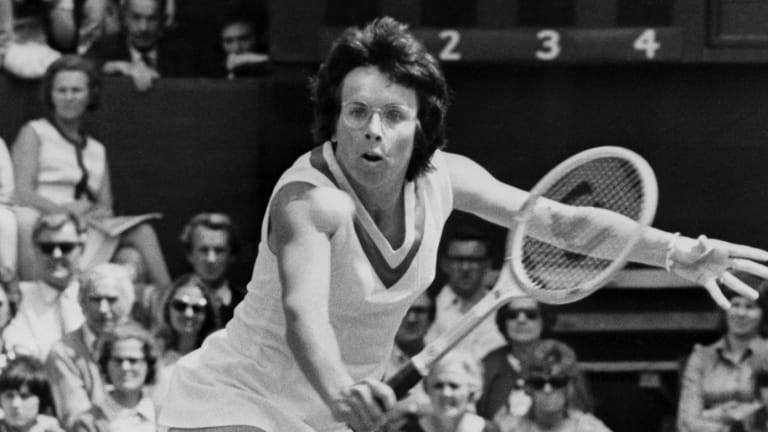By going for it, a future that Billie Jean King imagined came to life
By Sep 15, 2020Pop Culture
Billie Jean King named to inaugural TIME100 Philanthropy list
By May 23, 2025Pop Culture
Billie Jean King immortalized in bronze with star on Hollywood Walk of Fame
By Apr 07, 2025Social
Billie Jean King enrolls in college to complete history degree after over 60 years
By Mar 25, 2025Pop Culture
Tennis on Film: Rating Battle of the Sexes (2017), the best tennis movie that no one watched
By Feb 04, 2025The Business of Tennis
Billie Jean King: Tennis stars need to learn the business—not just play
By Jan 08, 2025Pop Culture
Billie Jean King thrilled by 'honor' of serving as grand marshal for 136th annual Rose Parade
By Jan 02, 2025Pop Culture
Billie Jean King named grand marshal for the 136th Rose Parade on New Year's Day
By Oct 07, 2024Pop Culture
Back to school with Billie Jean King: Trailblazer honored with statue at Cal State LA
By Oct 03, 2024Social
Overhaul the scoring? Have players wear numbers? Here's how Billie Jean King would change tennis
By Sep 21, 2024By going for it, a future that Billie Jean King imagined came to life
Her fellow Original 9 trailblazers agree that the vision and success in getting women's professional tennis off the ground wouldn’t have been possible without King's indispensable efforts.
Published Sep 15, 2020
Advertising

By going for it, a future that Billie Jean King imagined came to life
© AFP via Getty Images
Advertising

By going for it, a future that Billie Jean King imagined came to life
© Zhouzhiyong
Advertising

By going for it, a future that Billie Jean King imagined came to life